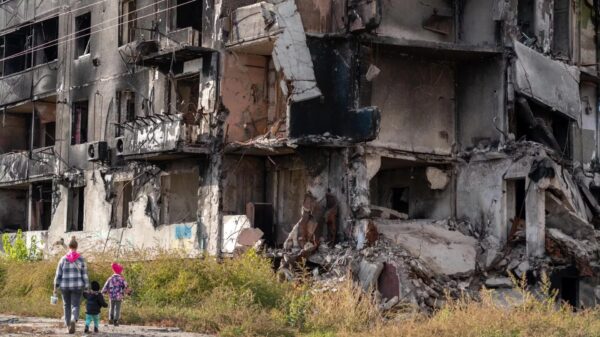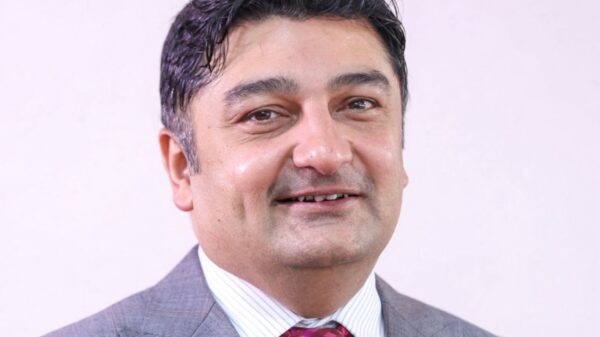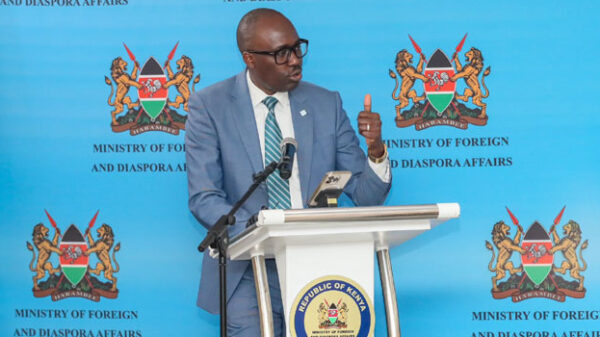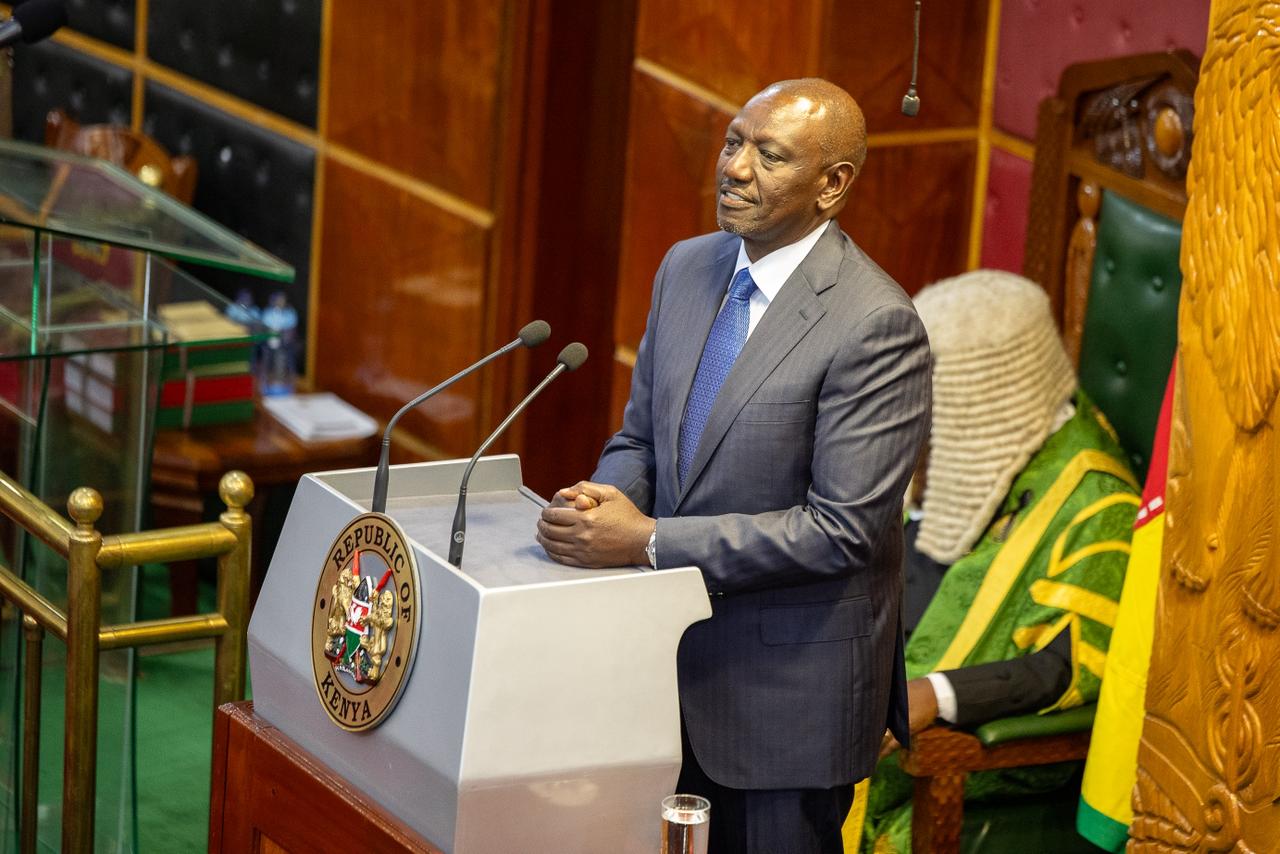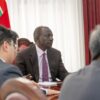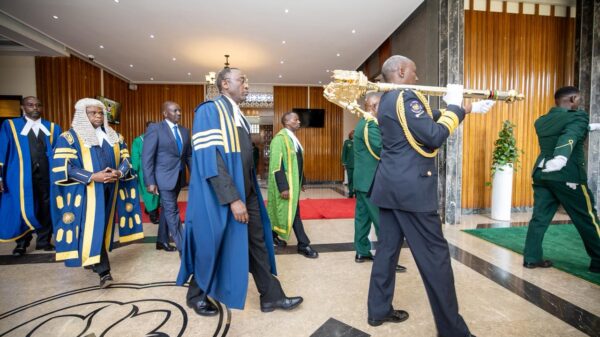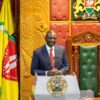NAIROBI, Kenya, Nov 20 – President William Ruto has used his State of the Nation Address to unveil an ambitious Sh5 trillion plan to “move Kenya from developing to developed” status, anchored on large-scale investment in people, irrigation, energy, and transport – and financed without piling on unsustainable debt.
Addressing a joint sitting of the National Assembly and the Senate in Parliament Buildings, Nairobi, Ruto said Kenya must “cast off the prevailing mindset of being content with the average” and emulate Asian Tigers such as South Korea and Malaysia, which he said rose through discipline, strategic investment and refusal to accept mediocrity.
Ruto said the next phase of his administration will be driven by four national priorities: massive investment in education, skills, science and innovation; a nationwide water harvesting and irrigation drive; an aggressive scale-up of power generation; and a ten–year transport and logistics upgrade, including roads, ports, airports and railway.
He disclosed that the government will seek at least Sh5 trillion to deliver these priorities but insisted the money would not come from traditional heavy borrowing.
“Our country will not be developed by others. Our country will not be developed by aid. Our country will not be developed by debt. Our country will be developed by us, using our own revenues and taxes,” Ruto said, pledging that “no revenues or taxes will be stolen.”
The President acknowledged that for years Kenya has relied on debt – including major infrastructure loans from China and other lenders – to finance roads, rail, ports and energy projects, but said this model must change.
To fund the new push, Ruto announced the creation of a National Infrastructure Fund and a Sovereign Wealth Fund that will ring–fence privatisation proceeds and natural resource royalties for long-term investment, instead of using them to plug annual budget gaps.
All proceeds from privatisation of State corporations will be channelled into the infrastructure fund, which will then be used to attract up to 10 times more in private capital from pension funds, sovereign partners and development financiers.
The Sovereign Wealth Fund will, he said, save a portion of resource revenues for future generations, provide a stabilisation buffer against global shocks and invest commercially in strategic projects.
Economy ‘stabilised’, critics dismissed
Ruto told MPs that when he took office in 2022, Kenya faced soaring inflation, a weakening shilling, low foreign reserves and warnings of possible default.
He said inflation had since fallen from 9.6 per cent in 2022 to 4.6 per cent, the shilling had stabilised at around 129 to the dollar, foreign reserves had climbed above $12 billion, and GDP had risen from $115 billion to $136 billion, pushing Kenya from the eighth- to the sixth-largest economy in Africa.
Foreign direct investment has more than tripled from 2021 levels, he added, while the Nairobi Securities Exchange has recovered to become one of the best-performing emerging markets.
In a direct swipe at his opponents, Ruto dismissed those he called “the high priests of eternal pessimism” who insist the economy is on the wrong path.
“Anyone may speak their mind – that is the beauty of our democracy – but no one is entitled to manufacture self-serving falsehoods and traffic them as facts,” he said.
Food, farming and irrigation push
Ruto said his decision to subsidise production rather than consumption had begun to pay off, citing the fertiliser subsidy and farmer registration programme.
More than 7.1 million farmers are now on the national digital register, he said, allowing targeted support. About 21 million bags of fertiliser have been distributed at subsidised prices, and national maize harvests have risen from 44 million bags in 2022 to a projected 70 million bags this year.
He said the price of a 2kg packet of maize flour had fallen from KSh250 in 2022 to as low as KSh130. Tea earnings have grown from KSh138 billion to KSh215 billion; coffee prices to farmers have nearly doubled; and sugar, edible oil, cotton, cashew nut and coconut production have all increased.
To break dependence on rain-fed agriculture, Ruto announced plans to construct at least 50 mega dams, 200 medium and small dams and thousands of micro dams to bring 2.5 million acres under irrigation in the next five to seven years, especially in arid and semi-arid lands.
Power, roads and SGR
On energy, Ruto said Kenya must add 10,000 megawatts of new capacity in the next seven years – from geothermal, solar, wind, hydro and nuclear – to power industry, e-mobility, data centres and AI-driven technologies.
On transport and logistics, he said the government has mapped 2,500km of highways for dualing and 28,000km of new tarmac roads over the next decade.
He announced that next week he will launch the dualing of the Rironi–Naivasha–Nakuru–Mau Summit and Rironi–Maai Mahiu–Naivasha roads to end chronic gridlock on the corridor, alongside a wider programme to dual key national highways.
Ruto also said the Standard Gauge Railway will be extended from Naivasha to Kisumu and eventually Malaba, beginning January 2026, as part of efforts to cement Kenya’s status as the region’s transport and logistics hub.
Housing, health and education reforms
The President defended his flagship affordable housing programme, saying the government is delivering 230,000 homes countrywide as well as 178,000 student beds for universities, TVETs and KMTCs, with 74,000 beds already under construction.
He said 276 modern markets and 175 additional markets are being rolled out nationwide, while the Nairobi River Regeneration Programme is employing tens of thousands of youths and preparing sites for 10,000 homes along the restored river corridor.
On health, Ruto said the new Social Health Authority has enrolled 27 million Kenyans, tripling coverage compared to the defunct NHIF, and signed up more than 10,000 health facilities.
A total of 107,000 community health promoters have visited nearly 9 million households, screened millions for diabetes and hypertension and helped save thousands of lives, he said.
The government is paying premiums for 2.3 million vulnerable Kenyans – including orphans, widows and the elderly – under Universal Health Coverage, he added, and will increase the cancer benefits package from KSh550,000 to KSh800,000 from December 1, 2025.
On education, Ruto said his administration has hired 76,000 teachers, with a further 24,000 to be engaged by January 2026, delivered 23,000 new classrooms, expanded laboratories and more than doubled enrolment in TVET institutions.
Hustler Fund, youth and digital shift
Ruto said the Hustler Fund has disbursed over KSh80 billion to small borrowers, helped seven million previously blacklisted Kenyans repair their credit, and given three million small business owners access to formal finance.
He highlighted the NYOTA youth programme, which aims to support 820,000 unemployed young people over five years through apprenticeships, grants, skills training and supported savings.
On digital transformation, he said Kenya has expanded fibre by 24,000km, rolled out nearly 1,500 public Wi-Fi hotspots and established 300 digital hubs, with 400 more planned. Government services on eCitizen have grown from fewer than 400 to 22,500, he said, reducing leakages and corruption.
Nearly two million young people have been trained in digital skills, with about 300,000 now earning incomes online through Ajira, Jitume and the BPO sector.
Consultations with Uhuru and Raila
Ruto said his long-term infrastructure vision had been discussed with leaders across the political divide, including former President Uhuru Kenyatta and the late ODM leader Raila Odinga.
He told Parliament that Raila had reminded him no country industrialises without strong infrastructure, energy and food security, while Uhuru had underlined the need to scale up infrastructure investments to unlock growth.
Ruto thanked the 13th Parliament for backing key reforms and urged leaders to “choose ambition over fear” as Kenya seeks to match countries that have already made the leap to developed status.



